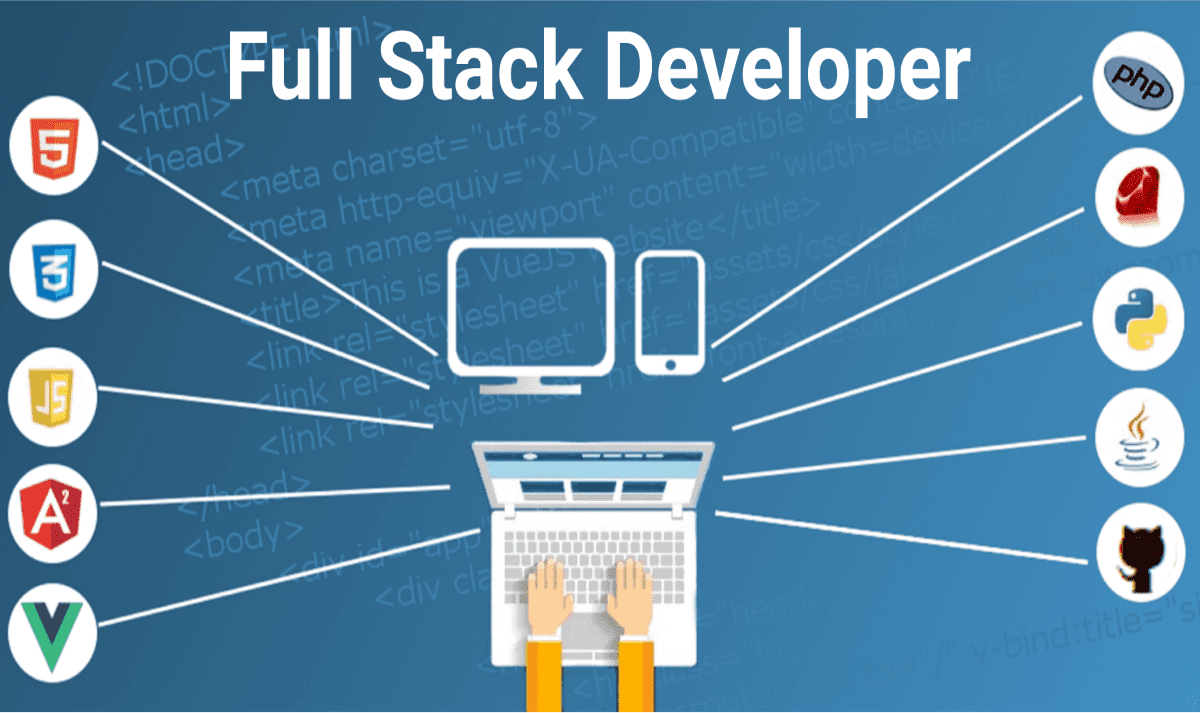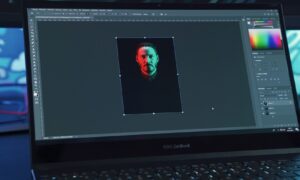Introduction to Full Stack Development:
Full stack development refers to the ability to work on a web application’s front-end and back-end. A full stack developer can take on different roles in the development process, from designing user interfaces to implementing server-side logic and managing databases. Having a broad range of skills enables full-stack developers to understand how all the different pieces of a web application fit together and to troubleshoot issues more effectively. ror developers This approach to development has become increasingly popular due to its versatility and efficiency, as it allows developers to work on multiple aspects of a project and reduces the need for specialized roles. Overall, full stack development is a valuable skill set for any developer looking to build robust and user-friendly web applications.
Understanding the Required Skills and Knowledge:
Becoming a full-stack developer requires a diverse set of skills and knowledge. Here are some of the essential areas to focus on:
Front-end Development:
- HTML, CSS, and JavaScript
- Responsive design and layout
- Cross-browser compatibility
- User experience (UX) design
Back-end Development:
- Server-side programming languages such as Node.js, Python, or Ruby on Rails
- Familiarity with databases and database management systems (DBMS) such as MySQL or MongoDB
- API design and development
- Security best practices
Other Key Skills:
- Version control with Git
- Command-line proficiency
- Familiarity with cloud computing platforms such as AWS or Google Cloud
- Familiarity with DevOps practices and tools
Becoming proficient in these areas takes time and practice. Some developers may specialize in certain areas, such as front-end or back-end development, while others prefer a broad range of skills. Ultimately, full-stack development aims to work on all aspects of a web application and understand how the different pieces fit together to create a cohesive whole.
Getting Started with Front-end Development:
Front-end development refers to the design and implementation of the user-facing aspects of a web application. Here are some key steps to get started with front-end development:
- Learn the basics of HTML, CSS, and JavaScript.
- Familiarize yourself with a front-end framework like React, Vue.js, or Angular.
- Practice responsive design and layout for different screen sizes.
- Focus on optimizing the user experience (UX) and usability of your designs.
- Stay up-to-date with the latest trends and best practices in front-end development.
- Utilize developer tools such as Chrome DevTools to troubleshoot and debug issues.
Front-end development requires creativity, attention to detail, and the ability to work closely with designers to implement their vision. With dedication and practice, anyone can learn front-end development with the help of a full stack developer course and create beautiful and functional user interfaces for web applications.
Learning Backend Development and Server Management:
Backend development involves creating the server-side logic of a web application. This includes handling data, managing server resources, and processing user requests. Here are some critical steps to start learning backend development and server management:
- Choose a backend programming language such as Node.js, Python, or Ruby on Rails.
- Familiarize yourself with database management systems (DBMS) such as MySQL or MongoDB.
- Learn about server management and deployment on cloud platforms like AWS or Google Cloud.
- Practice designing and implementing RESTful APIs.
- Understand security best practices for server-side development.
- Utilize software development tools such as Git and IDEs to streamline your workflow.
Backend development requires strong problem-solving skills, attention to detail, and a solid understanding of data structures and algorithms. However, with dedication and practice, anyone can learn backend development and server management and create scalable and robust web applications.
Diving into Database Management and Design:
Database management is an essential aspect of full-stack development. It involves designing, implementing, and maintaining databases that store the data used by web applications. Here are some key concepts to keep in mind when diving into database management and design:
- Understand the different types of databases, such as relational databases (SQL) and NoSQL databases (MongoDB).
- Learn about data modeling and normalization to ensure efficient database design.
- Understand how to optimize queries and index data to improve database performance.
- Familiarize yourself with backup and recovery procedures to ensure data integrity.
- Utilize database management tools such as MySQL Workbench or MongoDB Compass to streamline your workflow.
Effective database management and design are crucial for creating scalable and efficient web applications. With practice and attention to detail, anyone can become proficient in database management and strategy.
Introduction to APIs and Integrations:
APIs (Application Programming Interfaces) are essential tools for building software applications. APIs allow developers to access the functionality of other applications or services and integrate them into their projects. Integrations refer to connecting different systems or applications to work together seamlessly.
To work effectively with APIs and integrations, it’s important to understand the different types of APIs, such as RESTful or SOAP APIs, and learn how to design and implement your APIs. Additionally, knowing how to use third-party APIs to integrate with other services or applications is crucial. Integration tools like Zapier or IFTTT can streamline workflows.
APIs and integrations are vital for creating scalable and interconnected web applications. Dedication and practice can make anyone proficient in working with APIs and integrations.
Building a Portfolio and Practicing Projects:
Building a strong portfolio and practicing projects is essential to becoming a full-stack developer. A portfolio showcases your skills and experience to potential employers and clients. It can include projects you’ve worked on, open-source contributions, and personal projects demonstrating your technical proficiency and creativity.
Practicing projects is also crucial for improving your skills and staying up-to-date with the latest technologies and best practices. By working on projects, you can gain practical experience in full-stack development, collaborate with other developers, and showcase your work in your portfolio.
Networking and Finding Job Opportunities:
Networking is a vital aspect of any career, including full-stack development. Connecting with other developers, attending conferences, and participating in online communities can help you stay up-to-date with the latest trends and technologies and open up new job opportunities.
To find job opportunities, you can use job search websites like LinkedIn or apply directly to companies you’re interested in. Building a strong portfolio and showcasing your skills on social media platforms like GitHub and LinkedIn can also help you stand out to potential employers.
Final Thoughts and Tips for Success as a Full Stack Developer:
Becoming a successful full-stack developer requires hard work, dedication, and a continuous desire to learn and improve. Here are some final thoughts and tips to help you achieve success:
- Keep up with the latest technologies and industry trends by attending conferences and participating in online communities.
- Build a strong portfolio and showcase your skills on social media platforms like GitHub and LinkedIn.
- Continuously practice your skills by working on projects and contributing to open-source projects.
- Network with other developers and actively seek out job opportunities.
One way to gain the skills and knowledge needed to become a full-stack developer is through a comprehensive course like the Full Stack Development course. This course covers everything from front-end and back-end development to database management and deployment. It also includes practical projects to help you apply your skills and build a portfolio. As a result, you can succeed as a full-stack developer with dedication and practice.



































